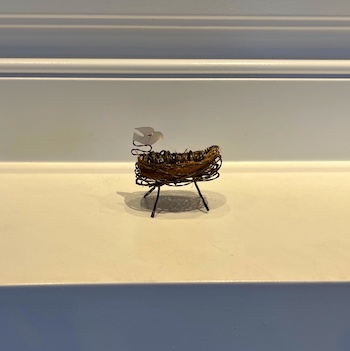
I recently started reading Infectious Generosity by Chris Anderson (The ‘Head of TED’). I’m about halfway through, and it’s fascinating. Generosity is a big deal to me, and one description in the book caught my attention.
Anderson describes how he received a call from a couple active in the TED community who had received an unexpected return on an investment of $2 million. They wanted to give it away, but they came up with a creative way to do it. They decided to give it away anonymously to strangers, $10,000 at a time. They also decided to collaborate with TED and social scientists to see if they could amplify the impact of the gifts.
TED put out an invitation for participants, with no mention of money. They selected participants out of thousands of applicants, and sent them a video explaining that a $10,000 gift would be transferred into a new PayPal account in their name. They were told they could spend it however they wanted, and there were only two rules; they had to spend it within 3 months, and they had to report back how they spent it.
In spite of being able to spend all of the money on themselves, on average only a third of it was spent that way, with two thirds spent on family, friends, and other causes. One person created their own ‘mini-grant’ program, giving their money away in $500 chunks. Another created a matching funds campaign for a charity to amplify their donation. Across cultures and income levels, people tended towards generosity. A paper published in Proceedings of the National Academy of Sciences estimated that the $2 million donation by the couple had effectively created more than 200 times the happiness that they would have received by spending the $2 million on themselves.
The $2 million was unexpected to the couple making the donation. And the many $10,000 grants were unexpected to the people who received them in the Mystery Experiment. This turns out to be a factor in generosity. It’s easier to give away something when it’s unexpected. Francie and I have a hack for generosity that takes advantage of this tendency. We set aside a percentage of all income into a separate checking account. It comes off the top of the income, at the same time the income is received. In fact, when I received a paycheck with electronic transfer, I set it up to automatically transfer a percentage of every paycheck into our separate ‘giving account’. Having it in a separate account makes it kind of like someone ‘gave’ it to us for the purpose of giving away. Sure, we could spend it on ourselves, but it was already set aside, so we didn’t really think of it as ‘our’ money anymore.
Now, when needs cross our paths, we can assess those based on factors other than the state of our personal finances, because the money is already set away. We started with a modest 5% of after-tax income, and now put away a substantial portion of our gross income. We have funded bucket-list trips to friends with terminal cancer, funerals, and lots of more ‘traditional’ charitable endeavors.
Creating your own separate giving account is a great way to harness the power of generosity!



Great blog Glen.
Fortunately, Mom lived the example of generosity throughout my entire life and greatly influenced my desire to seek out those who may need assistance. And then when I married, Bill, in spite of his strong habit of futility, I also saw his huge heart that was willing to serve and/or give others basically the shirt off his back. Naturally, we have a tremendous amount of joy and happiness being able to help others.
I had an interesting discussion with an 82-year-old incredibly independent friend recently. She seemed so proud telling me that she didn’t need help and would refuse it when her kids offered. I shared with her (lovingly) something that I learned probably in the last decade or so. People feel needed & valued when they can help others. I was only robbing myself and those who wanted to help when I frequently refused assistance and prided myself on being able to “do it all”. I would’ve given anything to see her face, but simply ‘read’ the silence as pensive. She then responded, “I’ve never thought of it that way. I’m going to have to reconsider my answer. “ I paused and then told her what a big heart she has for others, and that she is dearly loved by her kids.
I hope everyone who reads your blog is inspired to stretch themselves and give anything. And may they consequently experience the inexplicable joy afterwards. ☺️